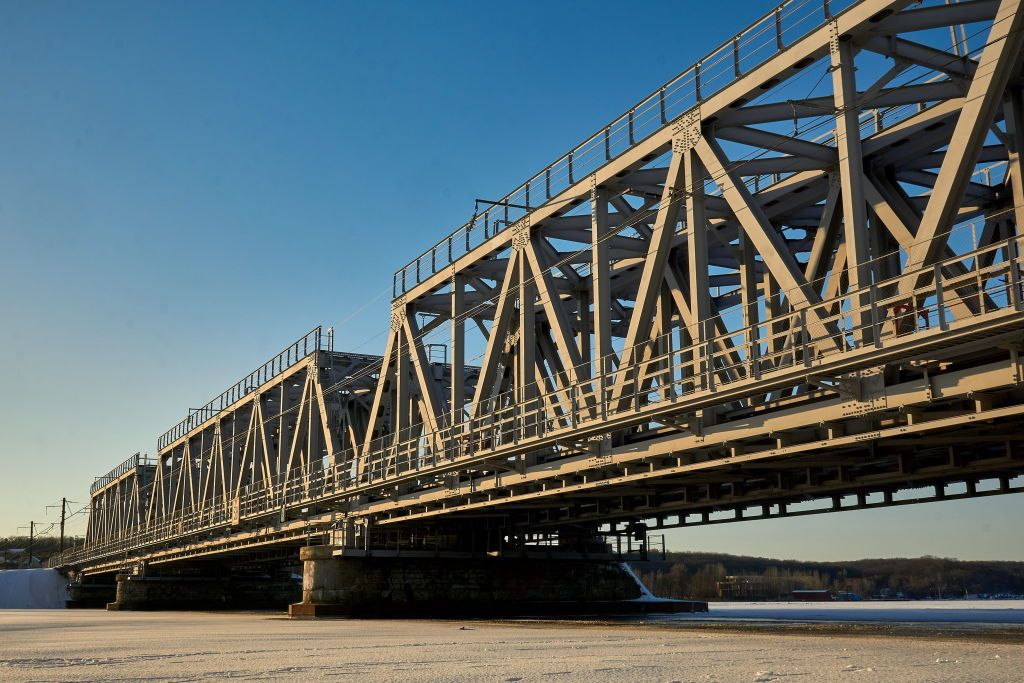The Russian Telegram news channel Baza reported that explosions on a railway bridge in Russia’s Samara Oblast damaged the concrete structures supporting the track. The incident occurred near the city of Kinel, where an “unknown device” exploded at around 1:30 p.m. local time. Despite a freight train traveling across the bridge at the time, no derailment occurred, and no casualties were reported. Eyewitnesses claimed to have seen a suspicious vehicle leaving the scene after the explosion. This incident is part of a series of sabotage attacks on Russian railways since the escalation of the full-scale war.
One of the earlier incidents took place on September 11 when Ukrainian reconnaissance and special forces allegedly blew up a railroad in Russia’s Belgorod Oblast. Additionally, in January 2024, sabotage attacks targeted train tracks in multiple cities in western Russia. While Ukraine’s military intelligence (HUR) did not explicitly claim responsibility for these attacks, they indicated that disrupting Russian military logistics was the goal. In November 2023, HUR claimed involvement in a joint operation against train lines in Moscow Oblast. The Security Service of Ukraine (SBU) was linked to an explosion on Russia’s Baikal-Amur railway line around the same time, highlighting the ongoing tensions between the two countries.
The most recent developments in the conflict between Russia and Ukraine include a meeting between Ukrainian President Zelensky and former U.S. President Trump in New York. Trump reiterated his desire to end the war “as soon as possible,” aligning with previous statements. Reports also surfaced regarding the enhancement of defenses on the Crimean bridge with underwater drone traps. Additionally, US intelligence warned about the risks associated with permitting Ukraine’s long-range strikes. These developments underscore the complex nature of the conflict and the involvement of various international actors in the region.
The series of sabotage attacks on Russian railways serves as a strategic move to disrupt military logistics and infrastructure. By targeting key transportation routes, Ukrainian forces aim to impede the movement of Russian troops and supplies, potentially gaining an advantage in the ongoing conflict. The use of explosive devices and other covert methods indicates a calculated approach to weakening Russian capabilities and exerting pressure on the adversary. These attacks highlight the resourcefulness and determination of Ukrainian forces in confronting a much larger and better-equipped opponent.
The involvement of Ukraine’s military intelligence and special forces in these sabotage activities reflects a broader strategy of asymmetric warfare. In the face of Russian military superiority, Ukraine relies on unconventional tactics to level the playing field and inflict damage on Russian infrastructure. The coordinated efforts to target railway bridges and tracks demonstrate a nuanced understanding of critical chokepoints in the transportation network and the potential consequences of disrupting them. This approach underscores the role of intelligence gathering and strategic planning in executing successful operations against a formidable foe.
As the conflict between Russia and Ukraine continues to escalate, the use of sabotage tactics and asymmetric warfare is likely to become more pronounced. Both sides are engaged in a high-stakes game of cat and mouse, with each seeking to outmaneuver the other through unconventional means. The targeting of railways, bridges, and other infrastructure underscores the importance of logistics in modern warfare and the vulnerabilities that can be exploited. Moving forward, the conflict is likely to see further instances of sabotage and clandestine operations as both sides vie for strategic advantage in a protracted and multifaceted conflict.


